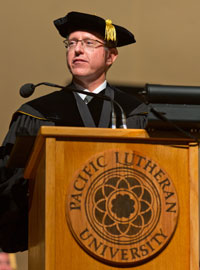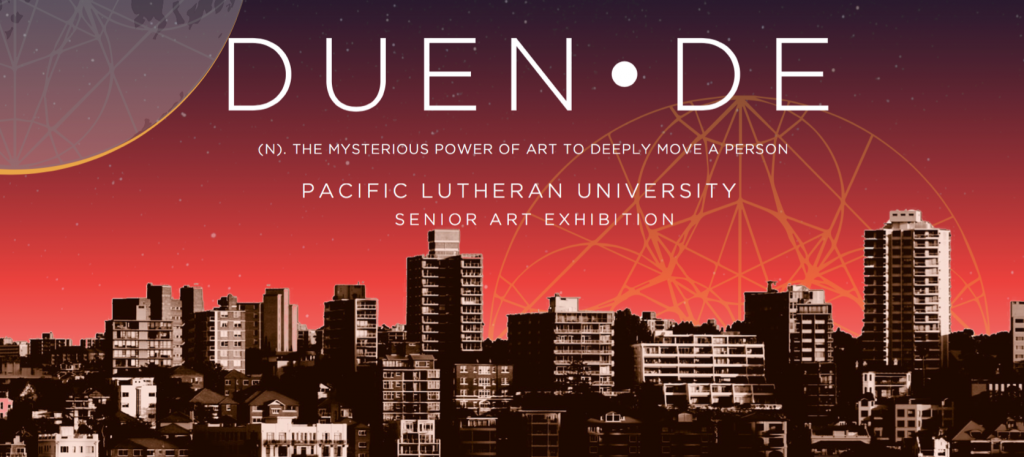Page 29 • (286 results in 0.046 seconds)
-
Global health: Why does it matter? If public health was a fashion show, global health would be the new black. It’s hot. But what is global health, exactly? And why does it matter? Mark Twain once complained that everybody talks about the weather but nobody…
defensible answers here. The vicious circular explanation is that hardly anybody cared about these diseases because hardly anybody – in the industrialized world anyway – cared about these diseases. They afflicted the billions of invisible poor in Africa, Asia and the rest of the developing world. What finally made the health of the developing world appear on our radar screen was not some new political movement or mass enlightenment. What happened, very simply, is that some powerful, high-profile people
-

http://www.youtube.com/watch?v=9bfe90PTrXY Pacific Lutheran University Inaugural Address By President Thomas W. Krise Before we get started, I’d like to have a word with the brand new freshmen and transfer students. You are, after all, MY class. We all become Lutes together today. I have proof that…
prompts our commitment not only to vocation but also to issues of diversity, justice, and sustainability. This month marks the 50th anniversary of the publication of Rachel Carson’s Silent Spring, which is credited with sparking the environmental movement in which PLU has been such a dedicated player. As much as Carson’s call to environmental action warned of danger, she also inspired us to care for the beauty of the earth, not merely its utility, when she noted that: “Those who contemplate the beauty
-

PLU Student-Faculty Research on Health Care and High Technology A conversation with 2016 Benson fellows Marc Vetter and Matthew Macfarlane The following excerpts were gathered from a May 26, 2017 conversation between Benson Family Chair Michael Halvorson and the 2016 Benson research fellows Marc Vetter…
software. U.S. consumers were seeing products that they had never seen before. Productivity applications like spreadsheets and word processors really changed what people could do with computers, and to study the origins of the movement I looked at how companies like Lotus 1-2-3, WordPerfect, and Microsoft contributed to the U.S. economy.” Michael: “How did this competitive marketplace take shape, Matt? Weren’t Bill Gates and Steve Jobs in a battle-to-the-death over these new software products?” Matt
-
Originally published in 2005 For two weeks of March, 2000, in the vast jungle along Mexico’s southern border with Belize, I joined a team of biologists and hounds in chasing and capturing a wild jaguar. I was in Mexico as a Fulbright Scholar. It took…
as it appears in our various discourses. There are various versions of the academic animal, but these abstract versions of the animal are I believe major barriers in our abilities to understand animals more fully and realize more clearly our obligations to the other creatures with whom we share this wonderful life. It should be clear that the animal movement has penetrated much more deeply into the popular imagination that it has into the academic mind. I say this as a person who writes
-
Originally Published 1996 Introduction Like other disciplines such as English and Sociology, Foreign Languages also have a history in the United States which is linked to the changing values of society as a whole. The discipline of foreign language teaching has evolved over the last…
and 2) the proficiency movement. The success of both these approaches to foreign language acquisition has served to mask their limitations and discourage critique. More specifically, the direct method can be faulted for its reliance on mimicry and repetition as the fundamental means of learning. As a result, users of the direct method are discouraged from attaining a critical perspective on the material itself; in fact, analysis (even at the level of basic grammatical paradigms) is regarded as
-

The Spanish word, Duende (du-end-ay), has come to refer to the mysterious power that art has to deeply move a person. Soon-to-be graduates in the Department of Art and Design chose this word to rally around for their senior exhibition in the University Gallery, opening…
how, the why. Through my personal explorations in my work I balance between what can draw on certain emotions, versus what can be used to express them more blatantly, as well as how a piece may interact in its created environment. How can I catch that brief flicker of something that may not be there in another moment? And how can it be shared? Outside of the six universal emotions, what are the techniques I can use to express even more of them? Where do art and emotion meet? Where do they differ
Do you have any feedback for us? If so, feel free to use our Feedback Form.


